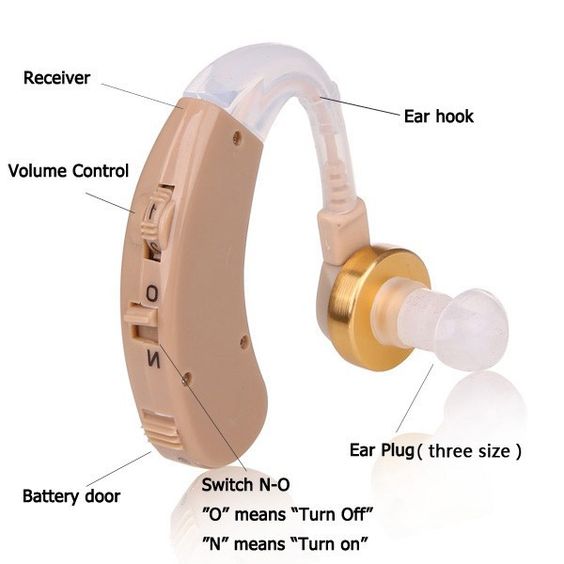The human ear is a marvel of natural engineering, finely tuned to detect a wide range of sounds essential for communication, environmental awareness, and overall sensory experience. Understanding " What Is the Audible Range of Human Ear" provides valuable insight into how we perceive sound and highlights the remarkable capabilities and limitations of our auditory system. At Decibel Clinic, we aim to shed light on this fascinating aspect of human physiology to enhance your understanding of hearing health.
Defining the Audible Range
The term “audible range” refers to the spectrum of sound frequencies that the human ear can detect. Sound is a form of energy that travels through the air (or another medium) as vibrations. These vibrations are perceived as sound when they reach our ears and are processed by the brain. The audible range encompasses all frequencies that can be heard by a typical human ear, and it plays a crucial role in our ability to perceive different types of sounds, from a whisper to a roar.
Frequency Range of Human Hearing
The standard audible range for human hearing extends from approximately 20 Hz to 20,000 Hz (20 kHz). This range is divided into two main categories:
- Low Frequencies (Bass Sounds): These frequencies range from 20 Hz to about 250 Hz. Low-frequency sounds are often associated with deep, rumbling noises such as the sound of a bass drum or thunder. These sounds can carry over long distances and are often felt as vibrations as well as heard.
- Mid Frequencies (Midrange Sounds): Covering frequencies from 250 Hz to around 4,000 Hz (4 kHz), midrange sounds are crucial for understanding human speech and recognizing many musical tones. This range includes the frequencies of most conversational speech and the tonal qualities of musical instruments like guitars and pianos.
- High Frequencies (Treble Sounds): Frequencies from 4,000 Hz to 20,000 Hz are considered high frequencies. These include sharp, crisp sounds such as a whistle or the higher notes on a piano. High-frequency sounds are essential for distinguishing between different sounds and understanding speech clearly.
Variation in Auditory Range
It’s important to note that the audible range can vary from person to person and can change with age. Young individuals typically have a broader range, extending from 20 Hz to 20 kHz. However, as people age, they often experience a gradual loss of high-frequency hearing, a condition known as presbycusis. This age-related hearing loss can reduce the upper limit of the audible range, sometimes making 15 kHz or lower the maximum detectable frequency.
The Importance of the Audible Range
The ability to hear a wide range of frequencies is crucial for several reasons:
- Communication: Understanding speech relies heavily on detecting a range of frequencies, particularly in the mid and high ranges. This range allows us to perceive consonants and vowels accurately, which is essential for effective verbal communication.
- Music and Entertainment: Our appreciation of music and other auditory experiences depends on hearing a wide frequency range. Different musical instruments produce sounds across the entire audible spectrum, and a broader hearing range allows us to enjoy and appreciate these nuances fully.
- Environmental Awareness: The ability to hear various frequencies helps us stay aware of our surroundings. High-frequency sounds, such as a baby crying or a car approaching, can alert us to important events and potential dangers.
Protecting Your Auditory Range
Maintaining a healthy hearing range is vital for preserving your ability to enjoy the full spectrum of sounds. Here are some tips for protecting your hearing:
- Avoid Prolonged Exposure to Loud Noise: Exposure to loud environments, such as concerts or construction sites, can damage hearing over time. Use ear protection in noisy settings to prevent hearing loss.
- Regular Hearing Check-Ups: Routine hearing assessments can help detect any changes in your auditory range early. At Decibel Clinic, we offer comprehensive hearing evaluations to monitor and maintain your hearing health.
- Healthy Lifestyle Choices: Maintaining overall health through a balanced diet and regular exercise can also support hearing health. Avoiding smoking and managing chronic conditions can contribute to better auditory function.
Conclusion
The audible range of the human ear, spanning from 20 Hz to 20,000 Hz, reflects the remarkable sensitivity and versatility of our auditory system. Understanding this range highlights the importance of hearing health and the role it plays in communication, music appreciation, and environmental awareness. At Decibel Clinic, we are dedicated to helping you maintain your hearing health and ensuring that you can continue to enjoy the full spectrum of sounds in your life. If you have any concerns about your hearing or would like to learn more about preserving your auditory range, please contact us for expert advice and support.





Comments